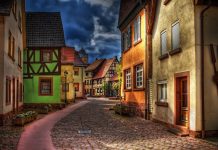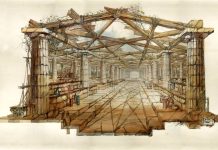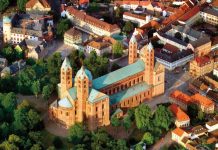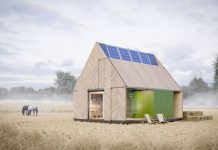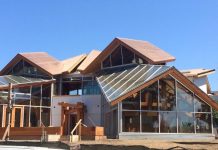Adopting some techniques of its compositional activity from architecture, environmental design conceptually changes its priorities – from the construction of formal spatial subordinations to the construction of objects using “spatial experiences” in a fairly narrow range – confirmation, development and enhancement of emotional and sensory states generated by the designer’s own connections of the environment with reality.
This affects literally all levels of compositional solutions of environmental design – from large-scale planning constructions of environmental complexes of various types to the deformation of the architectural interpretation of the principles of harmonization in working with environmental situations.
But to do this, it is necessary to introduce into the designer’s mind the concept of a special type of layout organization of environmental objects – an architectural and design framework (the term of E.A. Farvazova), which should combine the provisions:
- “horizontal” structuring of urban environment forms into “communication channels” of different ranks (high-speed, mechanical and pedestrian traffic and engineering support) and “working fields” (zones) that are supplied through these “channels”;
- “vertical” structuring of the same objects – into communication shafts (shafts) and functional (working) tiers;
- combining vertical and horizontal structures in space (primarily communication channels and trunks) with the device at the corresponding intersections of “transshipment” and “transfer” nodes;
- linking the resulting spatial grid of communications and zones to real space-planning structures and components of the urban environment;
- dividing the elements of the “grid” into different forms in order and type of implementation in accordance with the tasks of the current and prospective formation of this fragment of the urban environment.
Such a three-dimensional functional and spatial “skeleton” of the environment, conceived in advance or implemented during reconstruction, makes it possible, under any variants of its development, to use any design (primarily communication) and architectural (working out the nature of “fields” and “zones”) proposals as efficiently as possible without destruction or radical alteration of the fixed assets of the environmental complex to be preserved.
In our country, this is the odious destruction “for ideological reasons” of a number of quite good-quality Moscow hotels that allegedly did not fit into the architectural context of the capital. Which is not true in itself – for many of these structures created an environmental background that was consonant with the time – and in the professional essence of architecture: the replacement of large capital fixed assets with any new ones is permissible only with very serious justifications that have nothing to do with ideological speculation. For it is still possible to explain (but not justify) the construction of a palace on the site of a temple, but it is impossible to understand the logic of replacing one object with the same one, but with a different facade.
A special role for urban ensembles is played by the recent trend to revive the so-called “inhabited bridges”, combining a bridge crossing with the arrangement of shopping and public centers, transfer hubs, even residential formations in its “body”. Which, firstly, expands the palette of architectural and design solutions in the environment, and secondly, develops the ideas of a multi-tiered urban space in a new direction.



